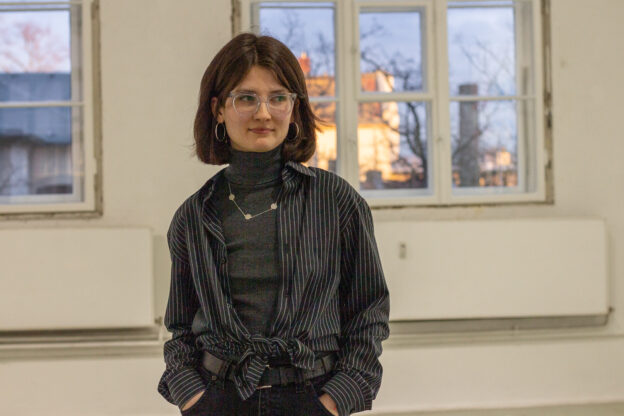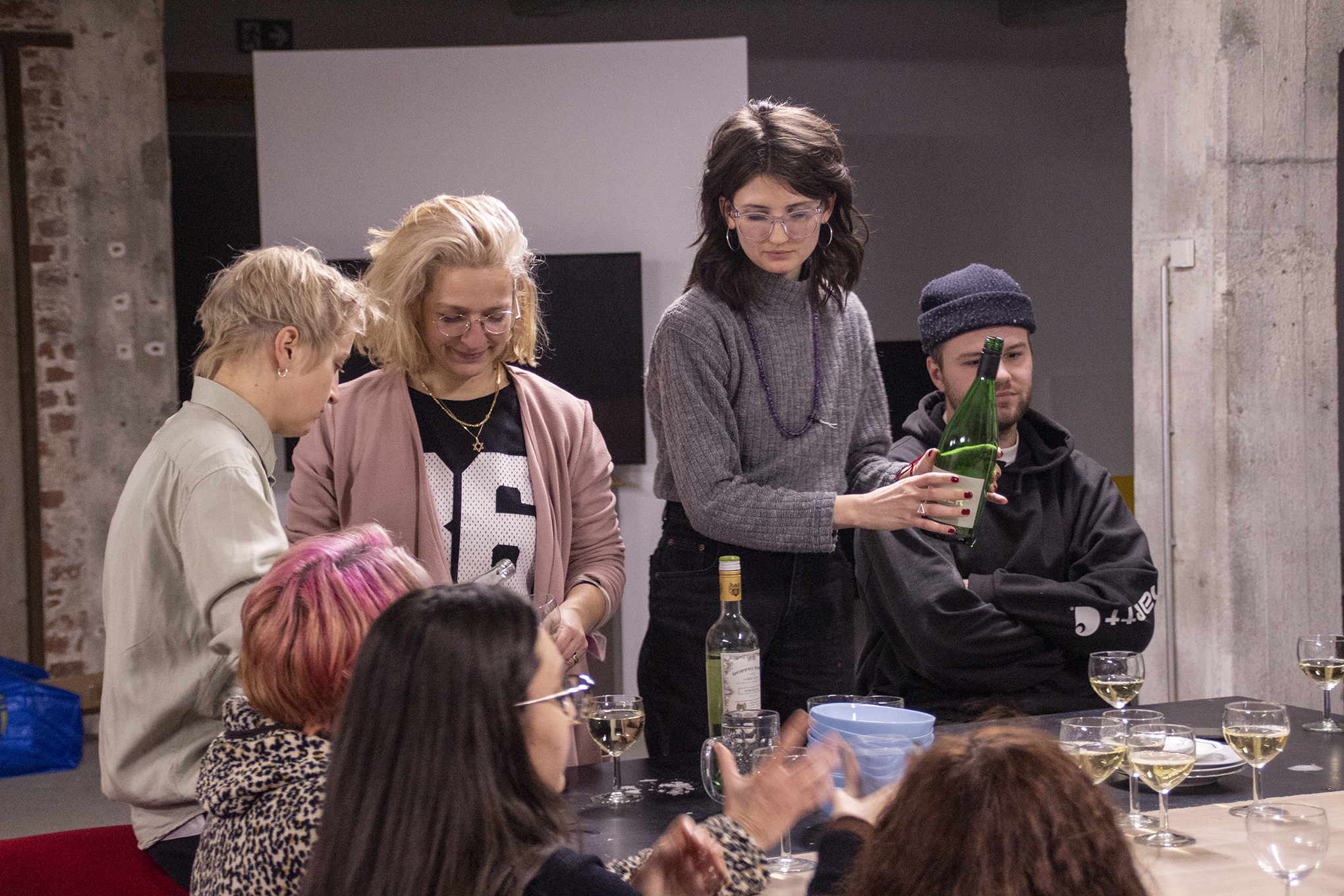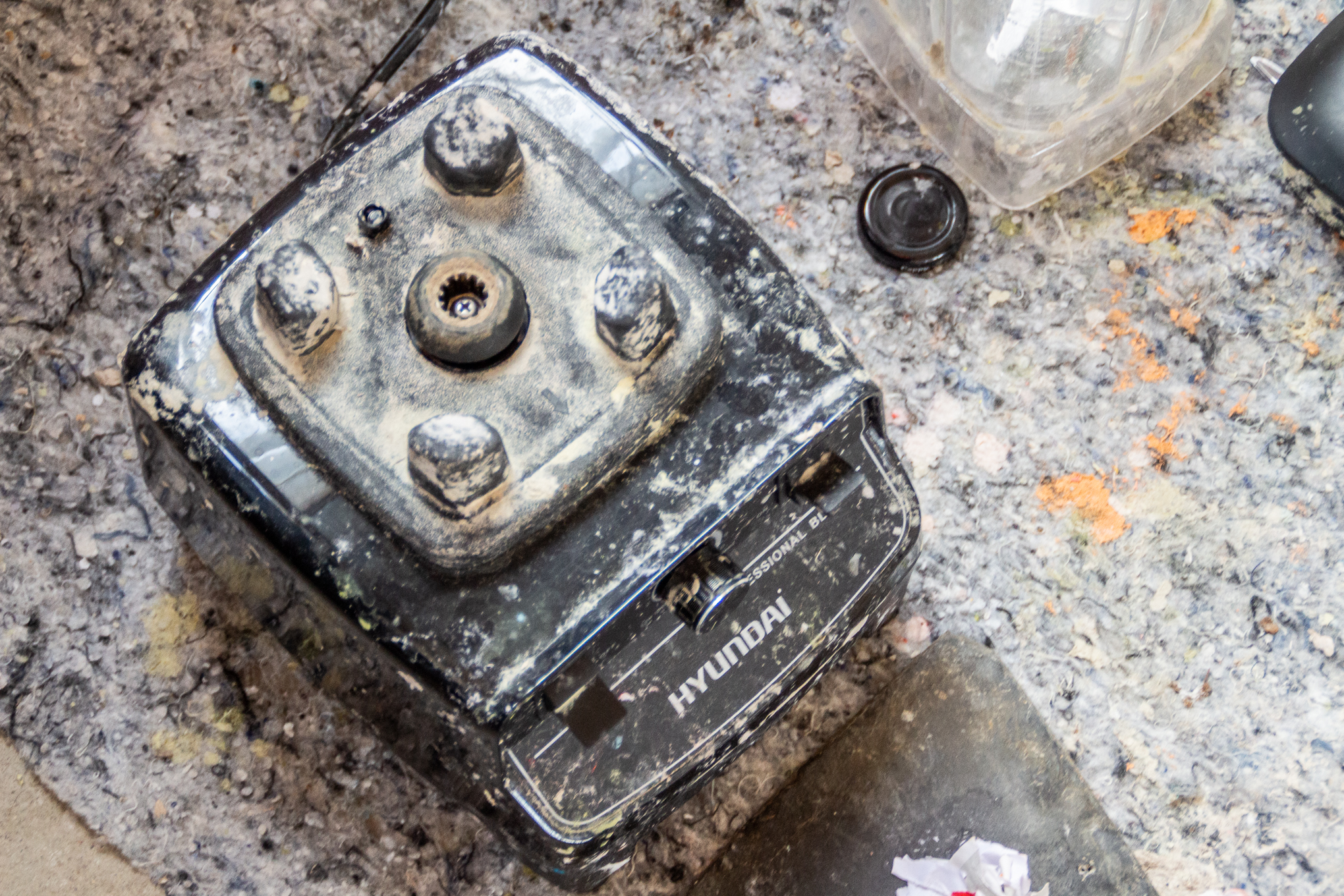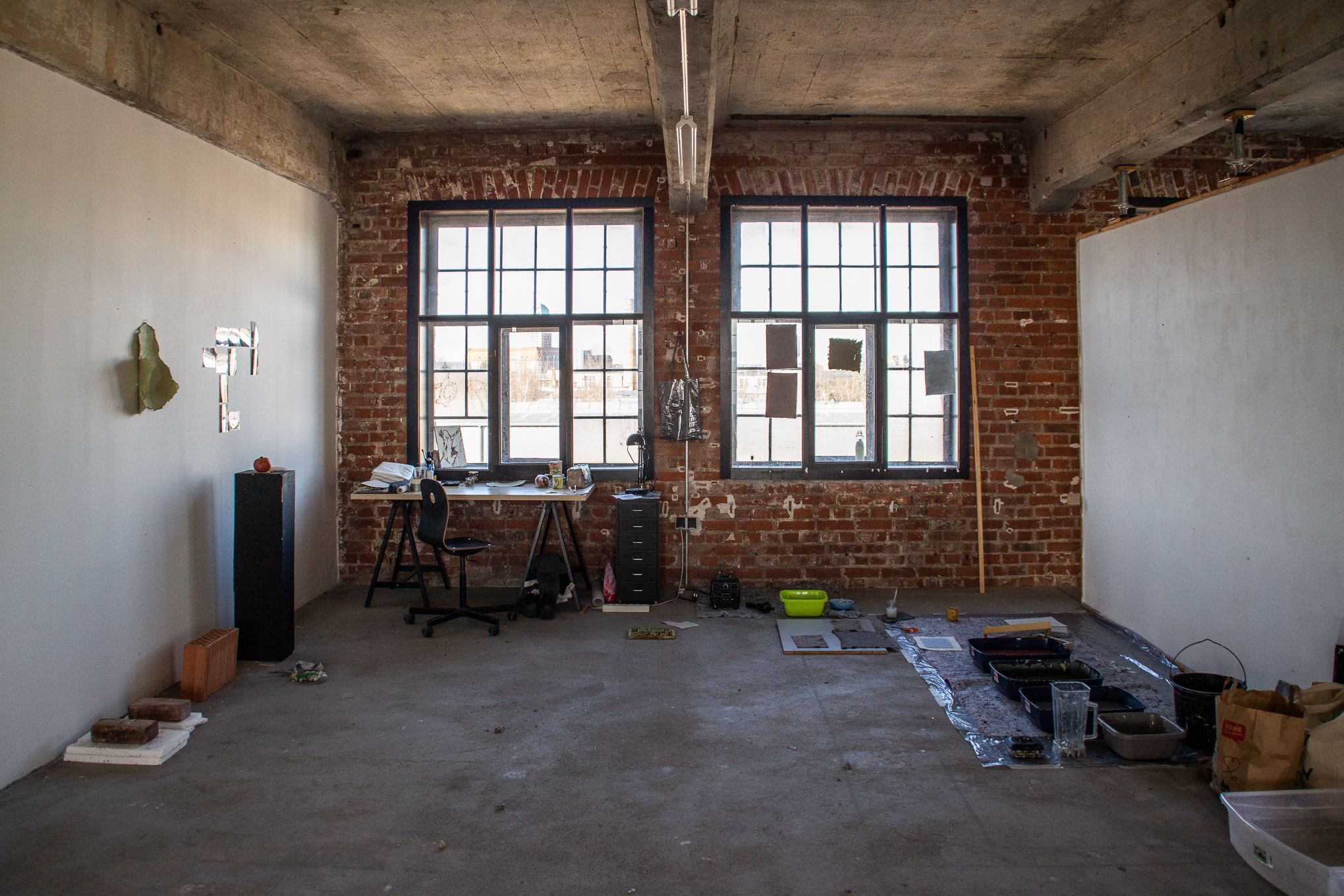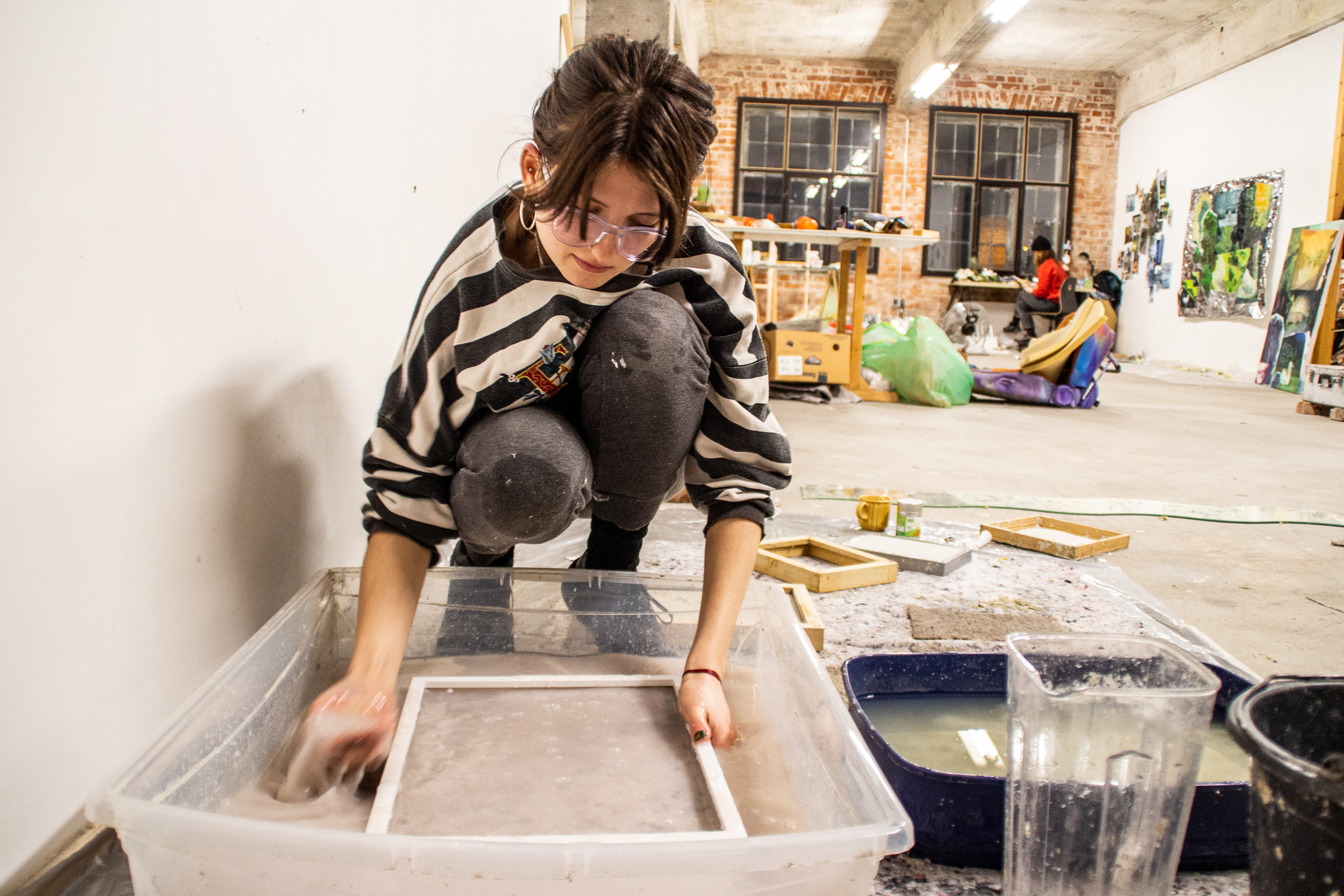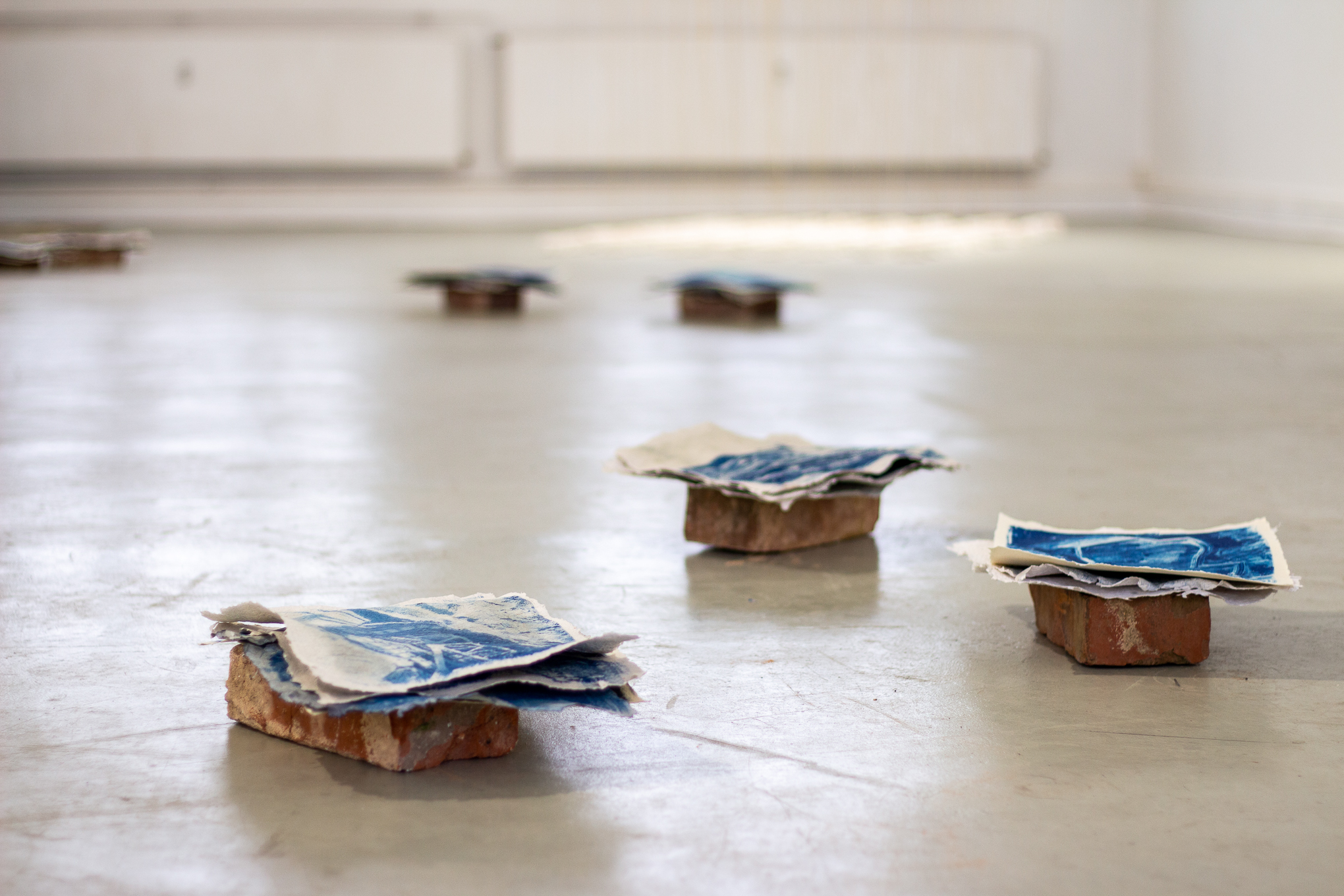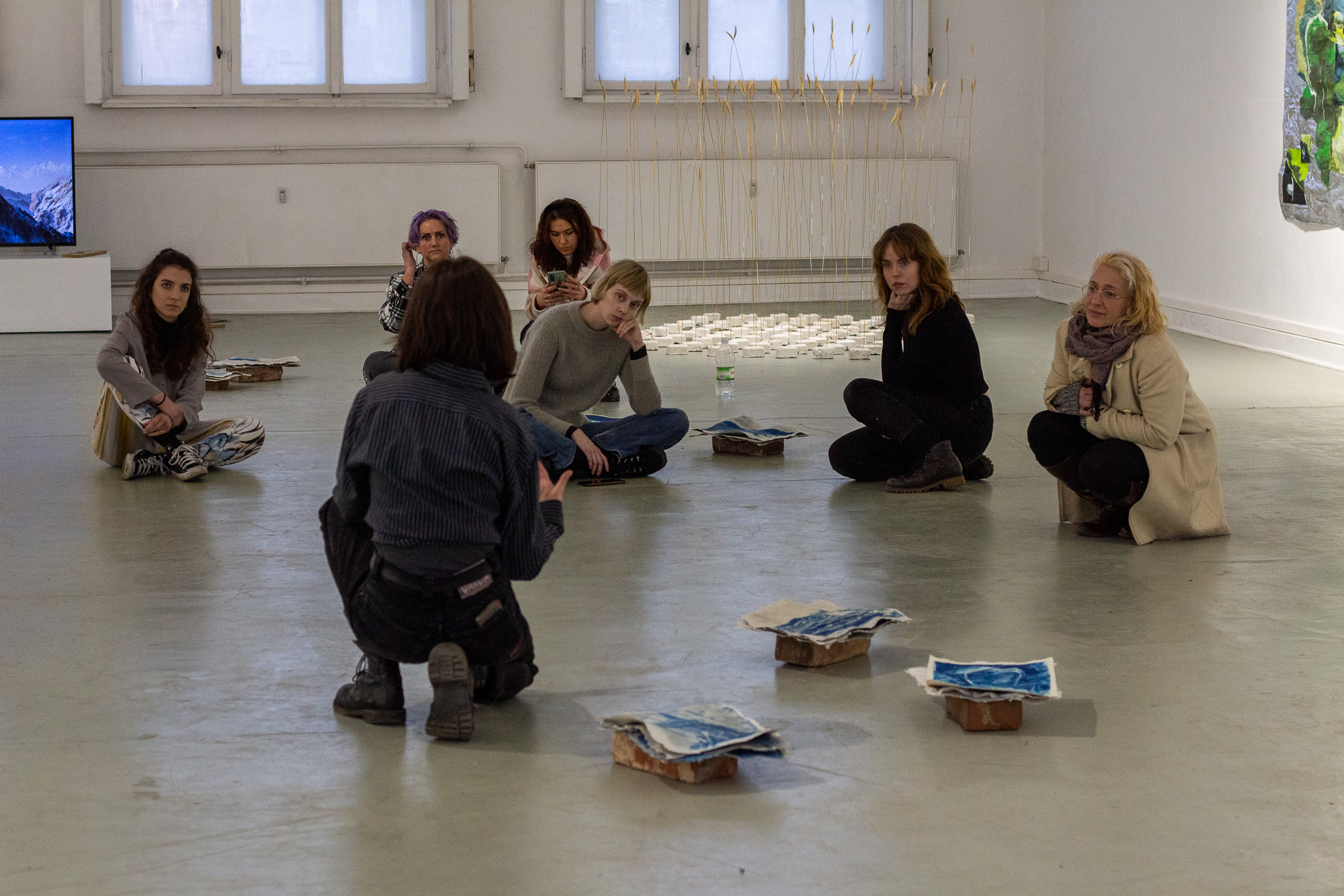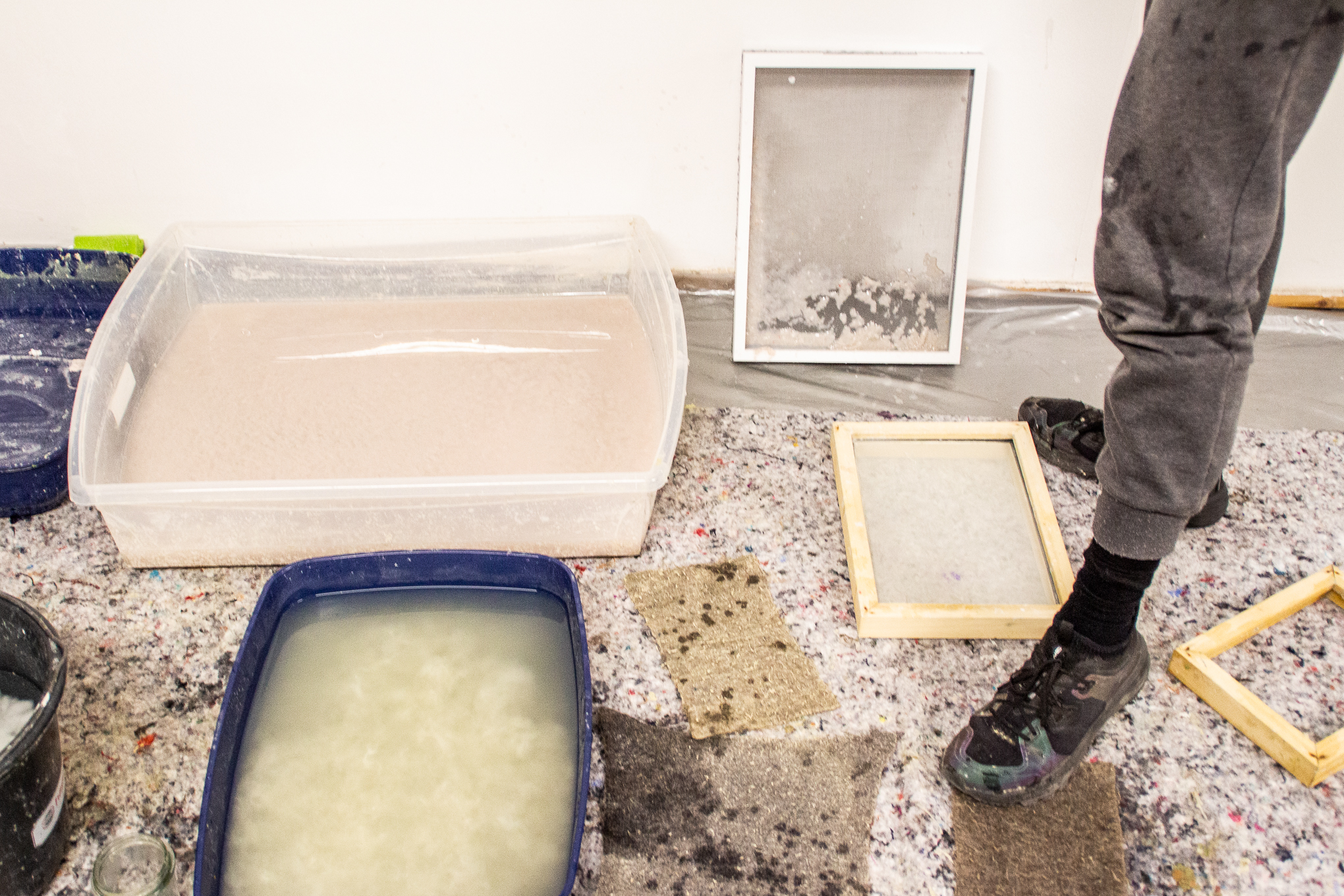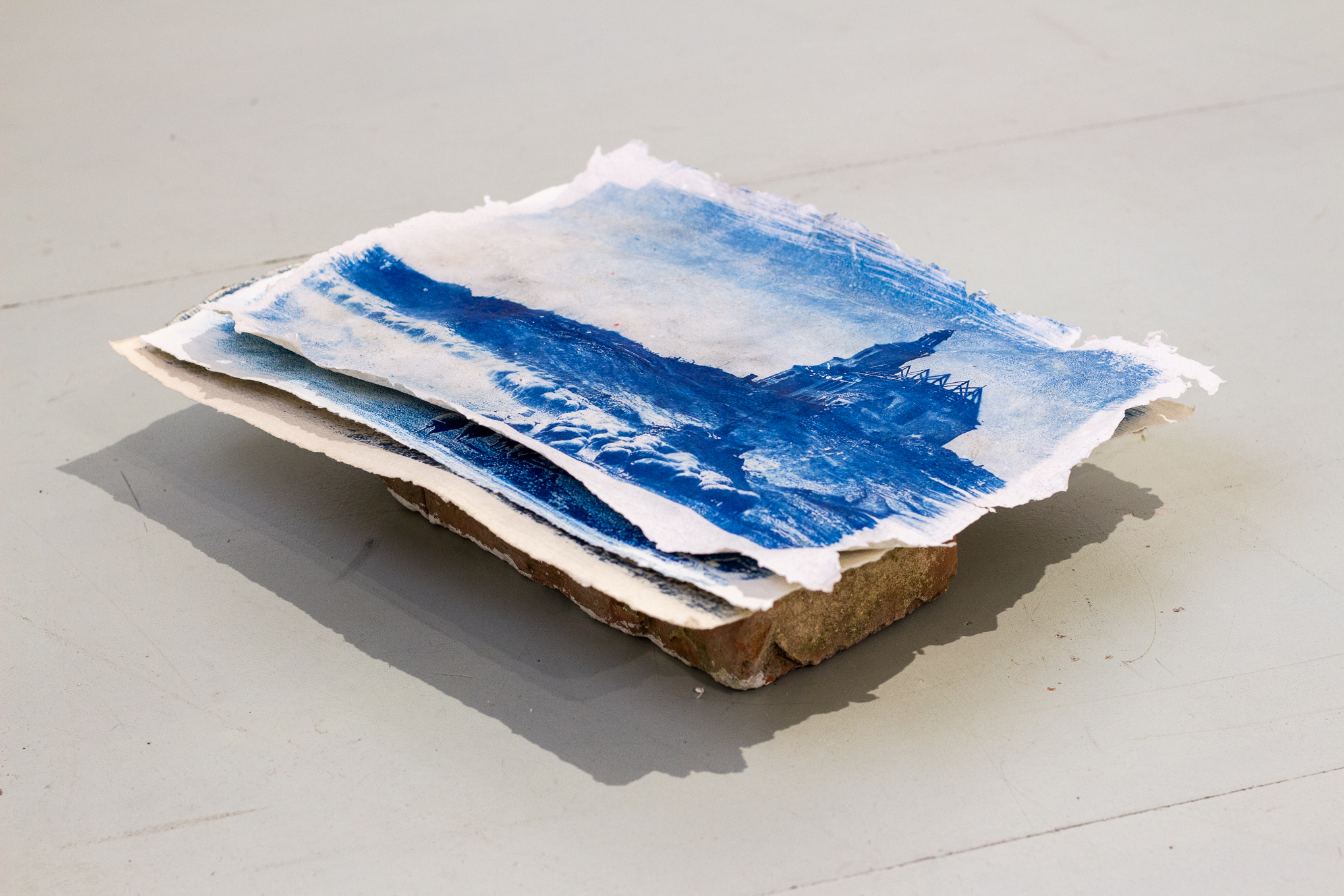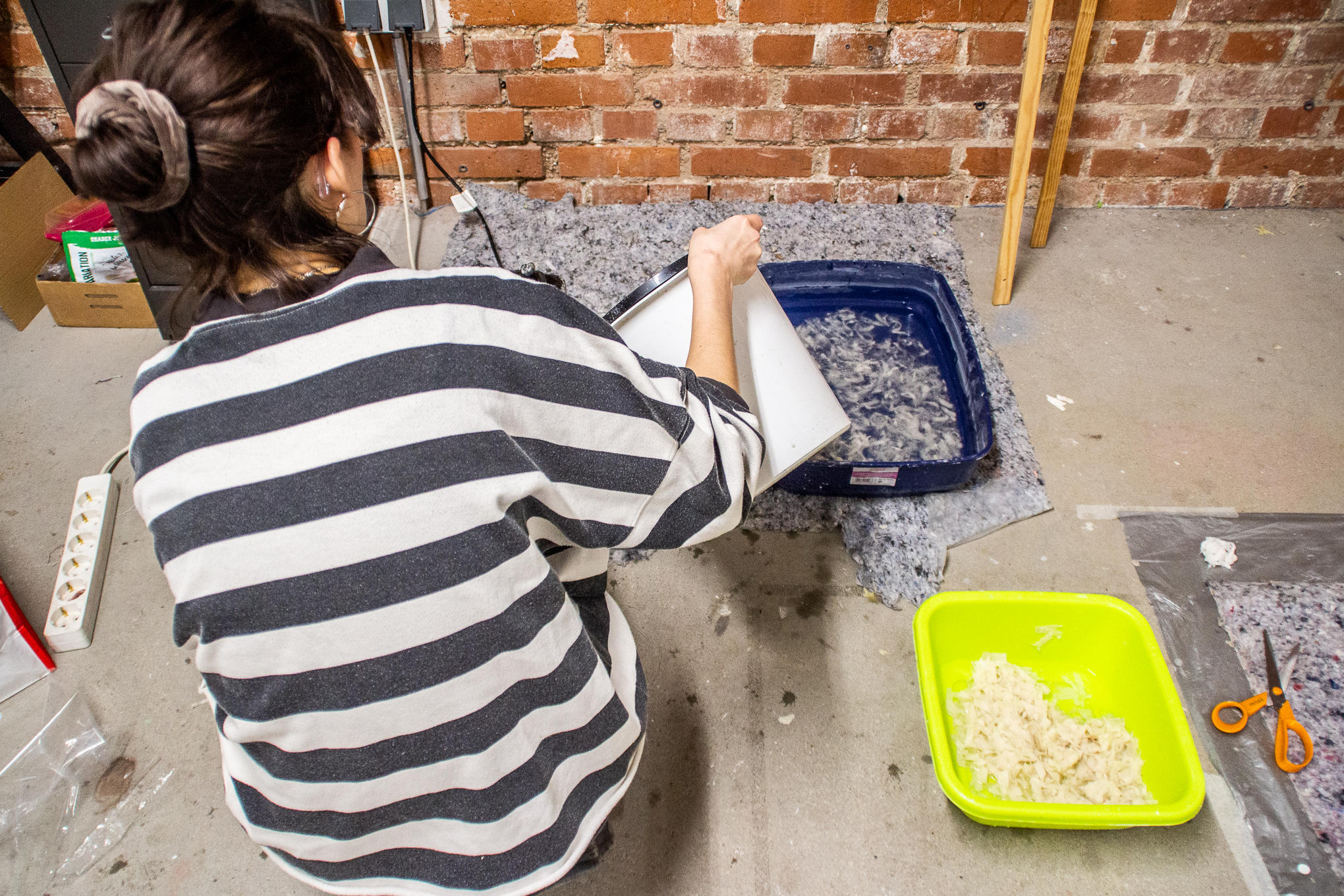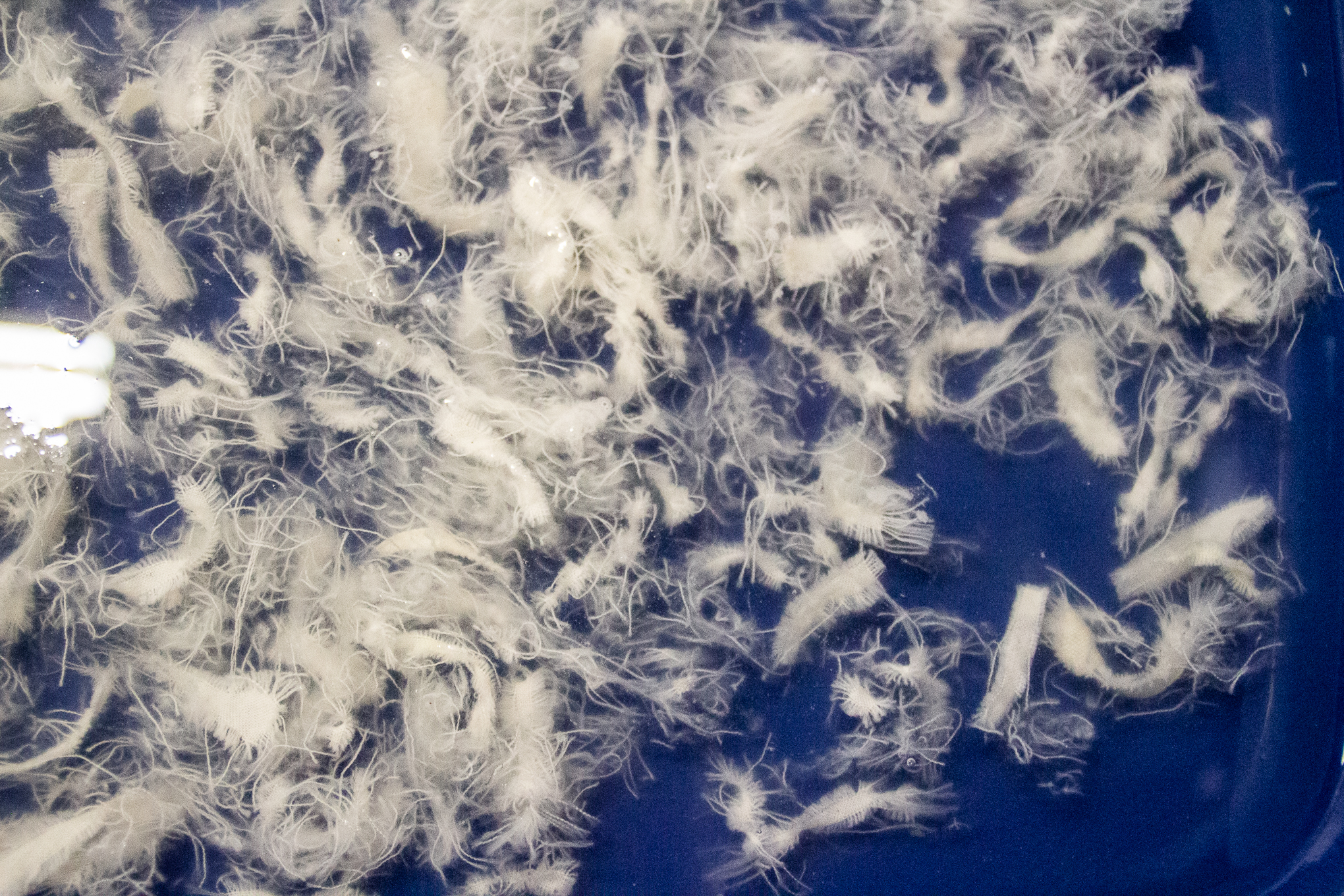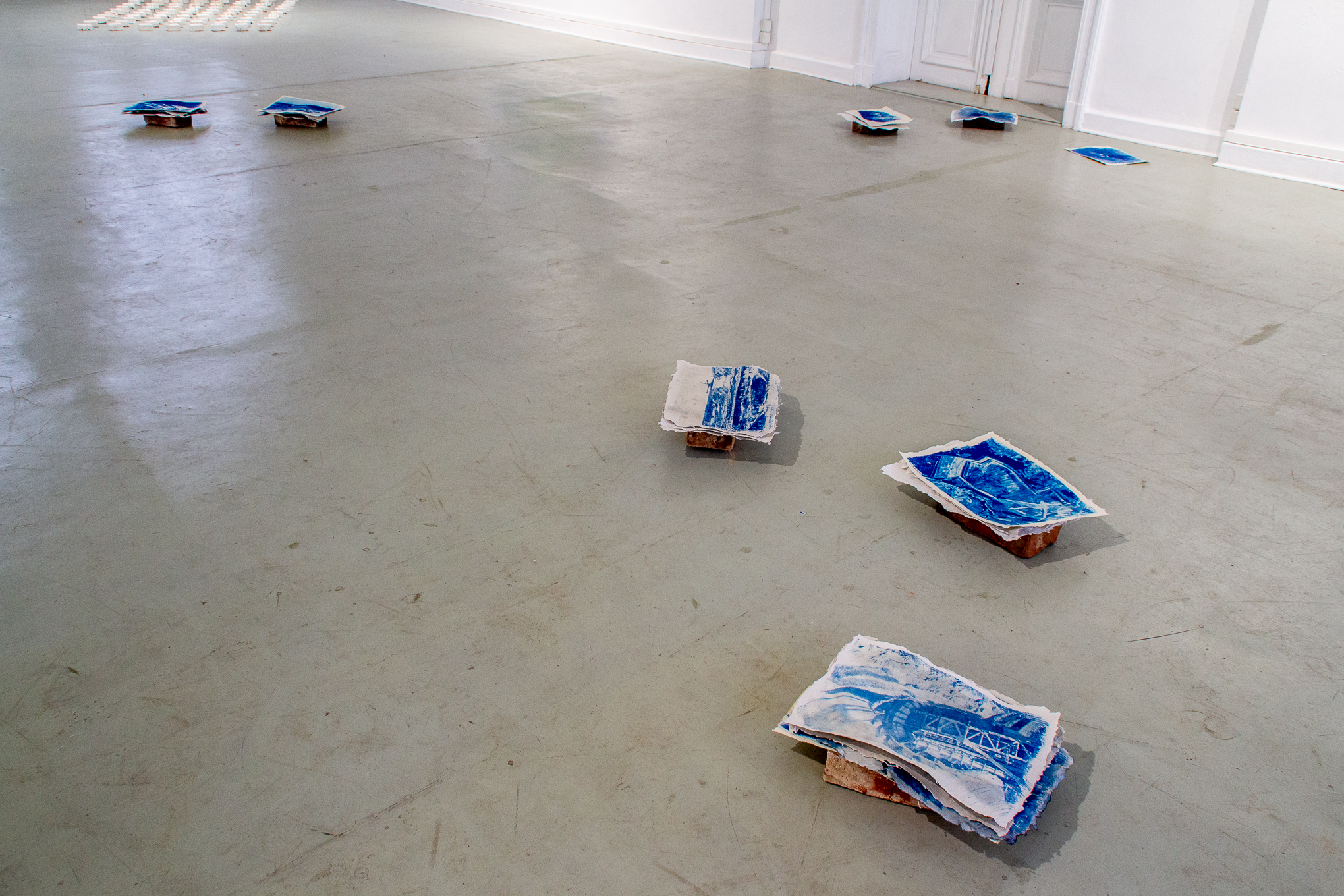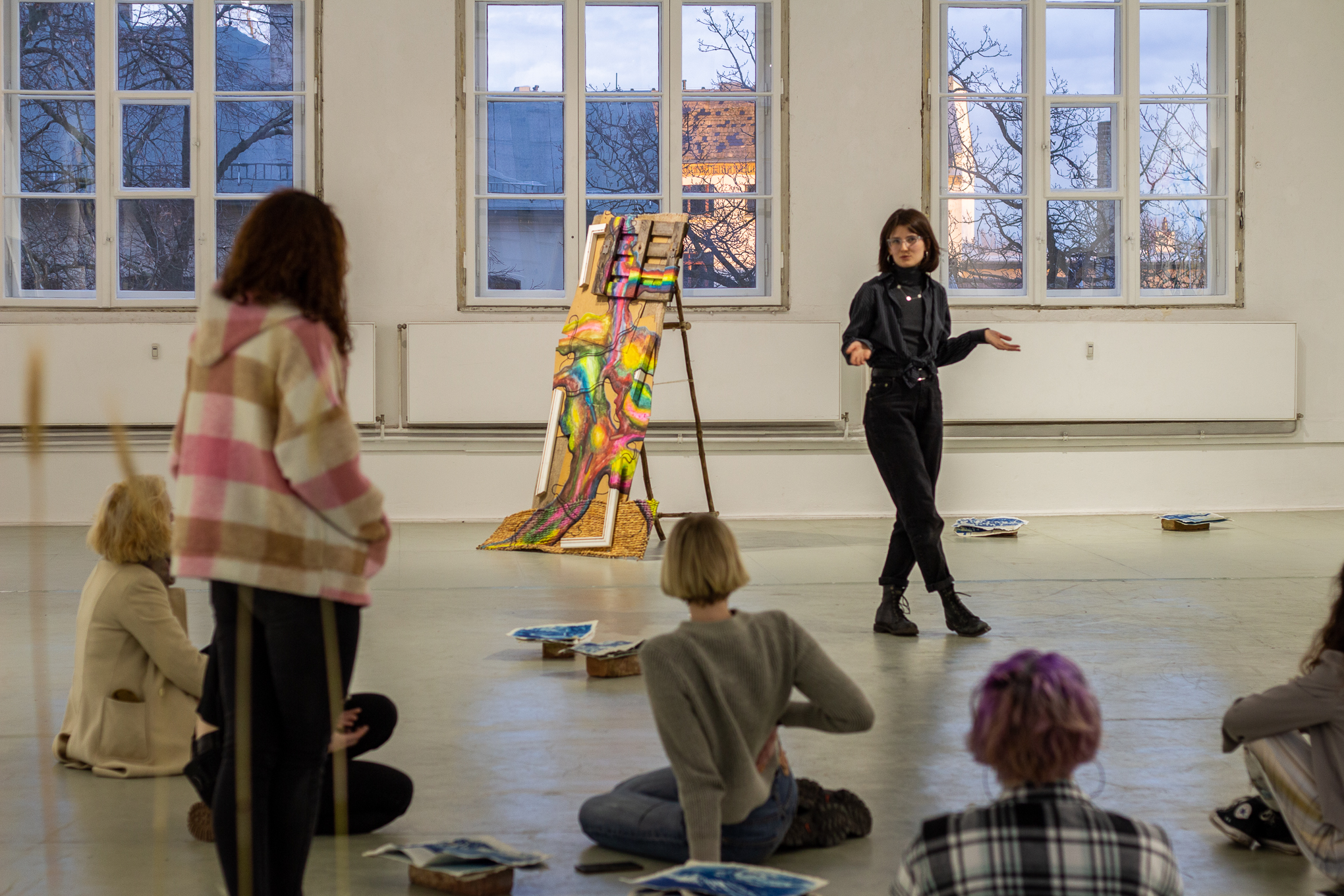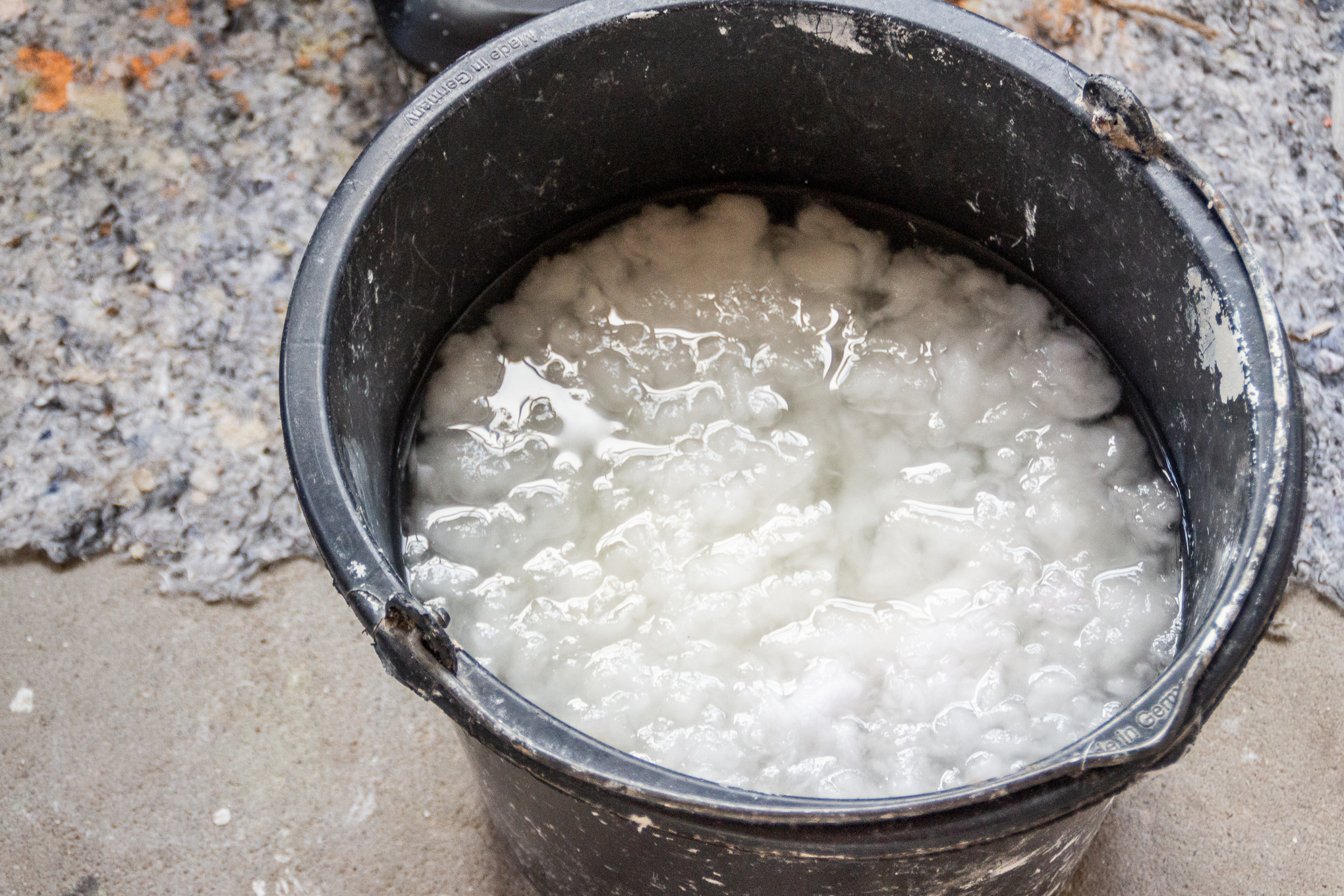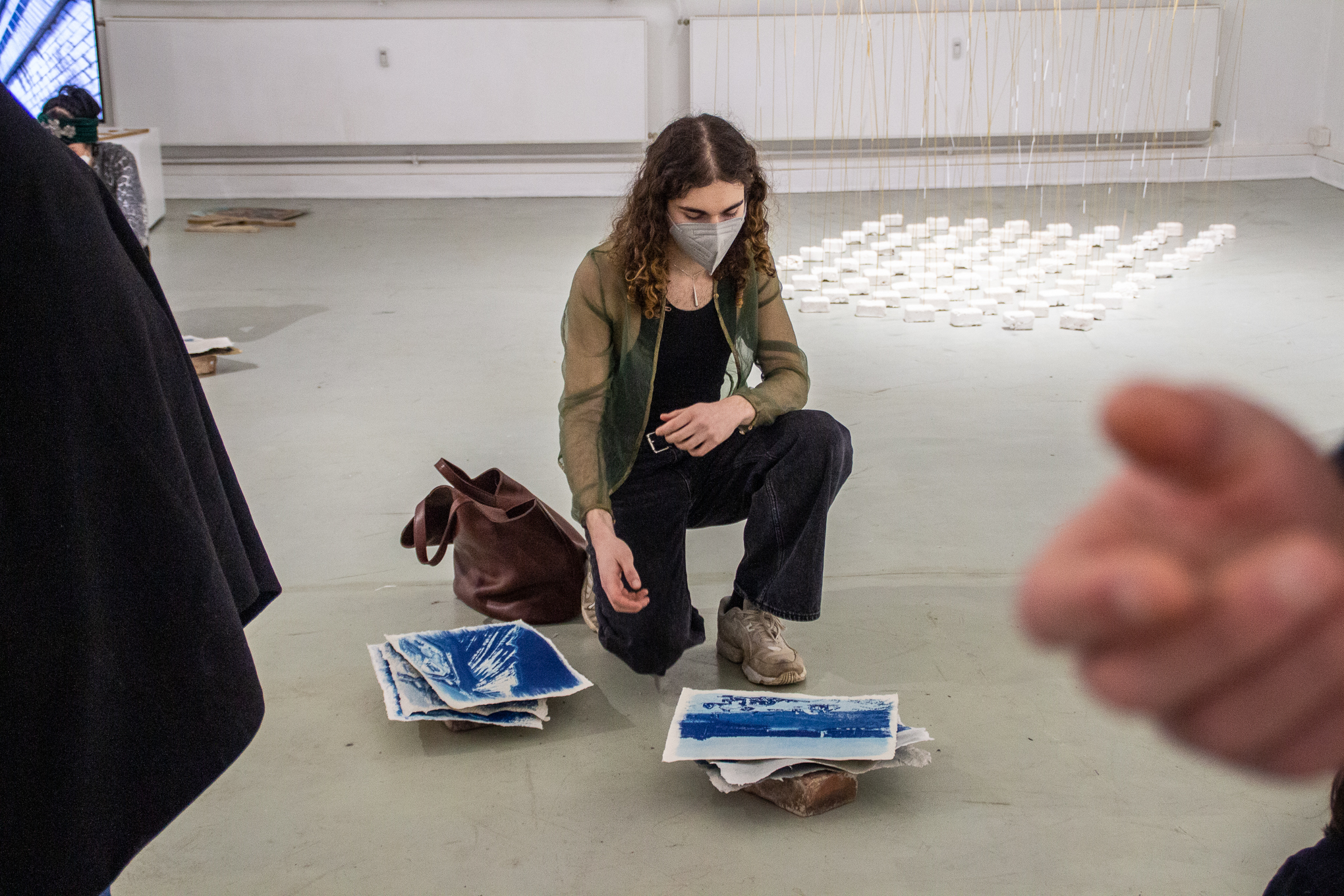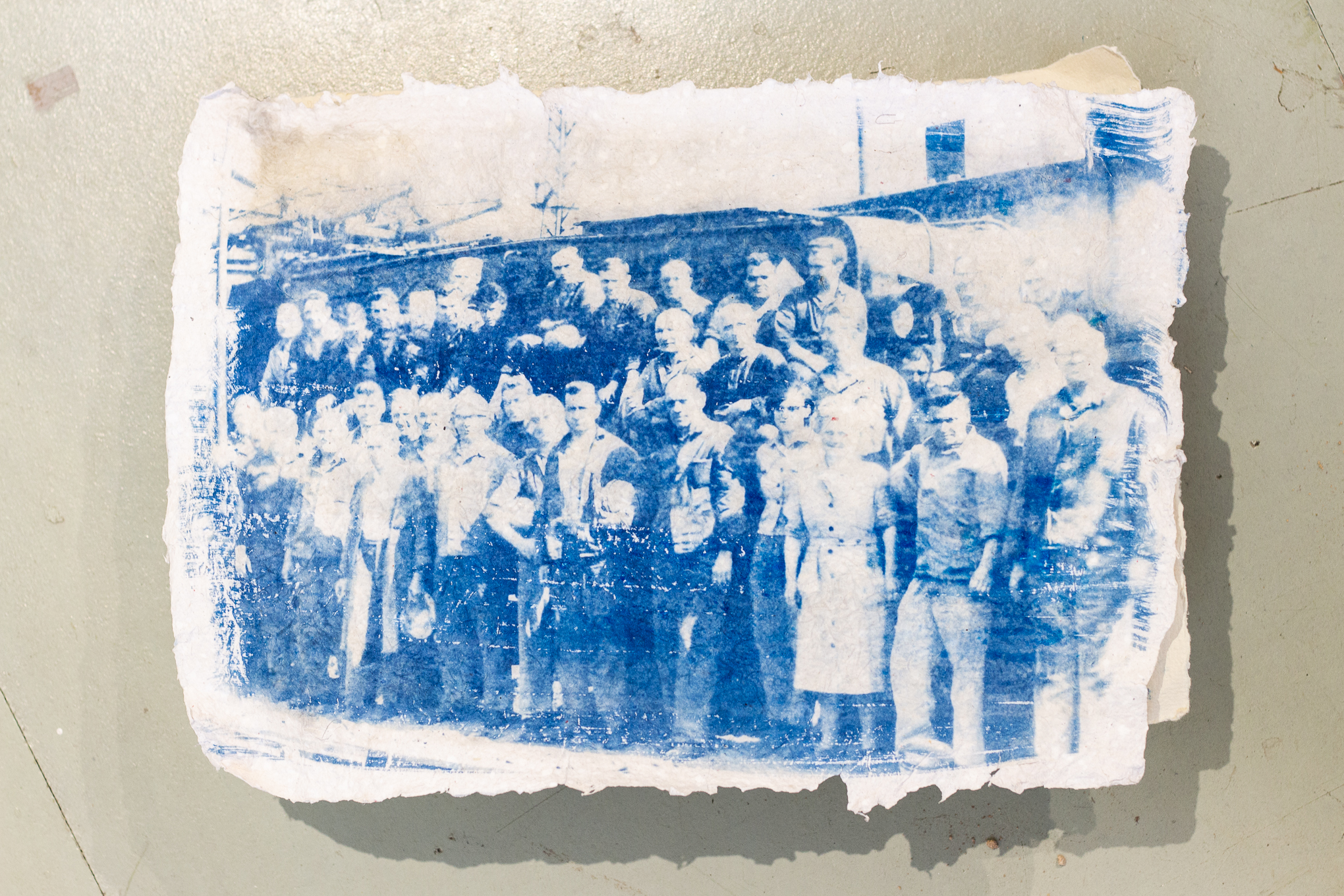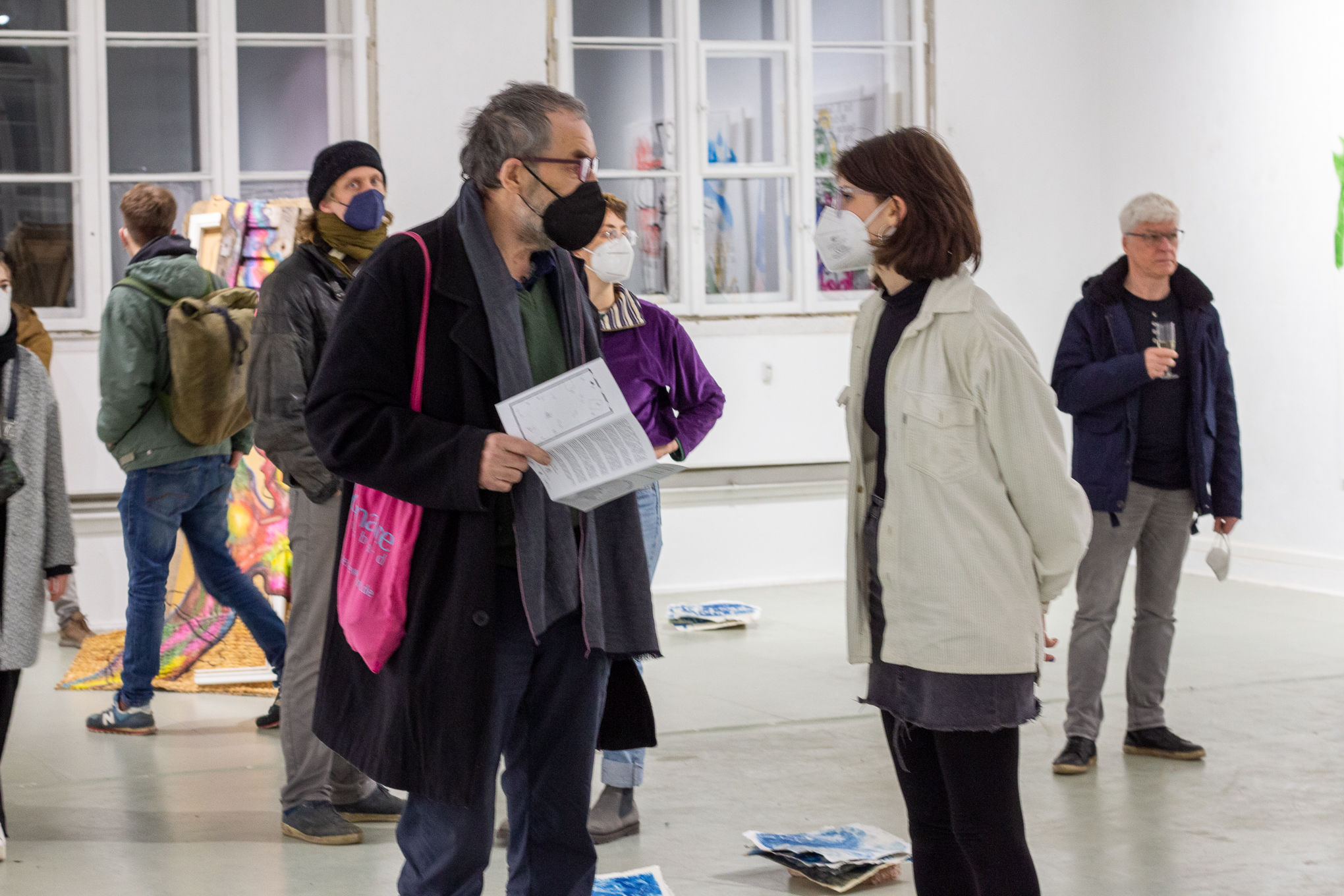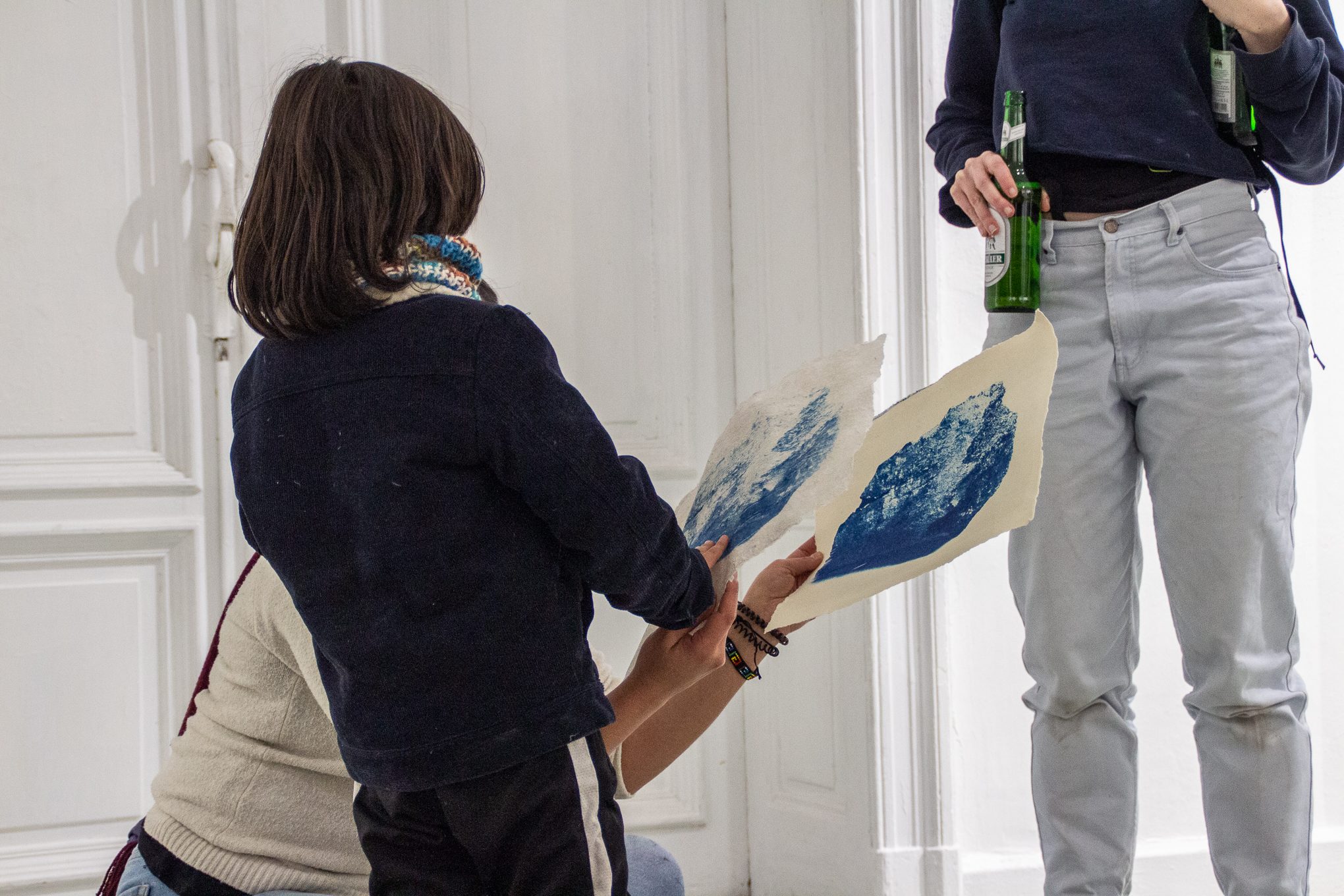Fanni Papp‘s efforts to pursue an artistic career might be compared to river whose course was constantly engineered to take a different route. Come what may, there are ways you can’t conform to the environment you are brought up in. A lot of the time, it isn’t even your surroundings at fault. There is an inner restlessness that you cannot overcome any other way than by pursuing your personal and professional life elsewhere. You need to see what is out there. Experience the openness and color of life.
Growing up in Hungary she found it hard to navigate her dreams. Her path was seemingly laid out for her. Despite this, she always tried to be true to her nature, stay close to her field of interest. That is why Fanni persisted in her quest to study abroad as an exchange student, first in Lyon and later in Leipzig.
Cultural heritage vs Industrial heritage
As an exchange student at HGB, she worked on the exhibition “What Even the Ghost Doesn’t Know” under the guidance of Clemens von Wedemeyer in his expanded cinema class. For the exhibition at Villa Esche in Chemnitz, they were invited to create site specific artworks reflective of the fractured memory of the place and its many owners. After intensive work on the project, Fanni became even more sensitive to the history of Leipzig.
Fanni heard of the lakes surrounding the city upon her first arrival. Friends recommended Cospudener See, Strömthaler See and Markkleeberger See as common leisure attractions. However, visiting these areas left her with a uneasy aftertaste. Even though the landscape may look wild compared to the sizeable city located next to it, the view carries something uncanny about it. To many locals it is comes as no great surprise. Surrounding areas of Leipzig were subjected to coal production for decades.
photos by PILOTENKUECHE
Reshaping the landscape for mineral extraction by open pit mining, the neighbouring area was stripped of its distinctive flora and left vacant. Now the pits have been filled with water, transforming them into the famous lakes, ready to fit with the recreational needs of the population. Still, after a near total cleansing of regions natural biodiversity, will rebranding the toxic barren to a campsite ever do it justice? Exploited and defaced, the lakeside still carries the scars of the past, visible in its sterility. “Experiencing the landscape for the first time felt like walking the surface of the moon,” Fanni adds.
Fanni’s piece to make peace with history
In her current project, Reaching Out to a Fictive Past, she has developed a research-based series which reflects the question at hand. She had to do her own excavation on the matter to somehow get into grips with the regional history where she found herself. And so, she submerged her hands into something that might resemble a toxic sludge of a landslide or wastewater, the making of handmade paper. She then printed archival images on the paper using cyanotype.
In the PKRD 50 exhibition warm white cow Fanni’s cyanotypes were the first thing that viewers saw upon stepping into the venue. The washes of blue were loosely stacked on bricks on the floor and dispersed throughout. This invited visitors to simultaneously take a journey through the physical space of the exhibition and historical timeline of the whole region.
By presenting us with visual facts, almost plain documentation and not the story, she plays with the viewers’ self-consciousness and interest in the matter. When viewing the archival imagery of people whose life we are observing from above, we too are digging into the wound of industrial capitalist dream to conquer it all in the name of progress.
The print of human agency
The intertwined interlaced threads of the paper pulp parallel and mimic the complex texture of socio-historical background of the industry. Back in the day, this land was once inhabited by farmers and non-human dwellers alike. However, now Saxony’s once peaceful landscape is now as flat as a table. Even though green activists bring attention to the issue now and then, the attempts to cover up the destructive human agency leaves the possibility for such history to be forgotten. That is why Fanni’s work is important.
Through her artworks a story unfolds about us, both human and non-human dwellers alike, being pushed to the margins. The way the handmade paper twists and turns parallels our emotional response. There is little justice we can force upon the big giants of the mining industry. But one thing is certain – if we keep the memory alive, we have a grasp on reality. We become the holders of our future.
written by Elžbieta Upė Rozanovaitė
You can find out the latest on Fanni’s instagram. Come see her work in person.
WARM WHITE COW
19-27 Feb
Alte Handelsschule
75 Geisserstr
COZY CONCRETE CABLE STORE
vernissage:
19.03.22
19 Uhr
performance:
Janne Steinhardt
Matilde Søes Rasmussen
open:
20-24 March
14-18 Uhr
PILOTENKUECHE
Franz-Flemming-Str 9

